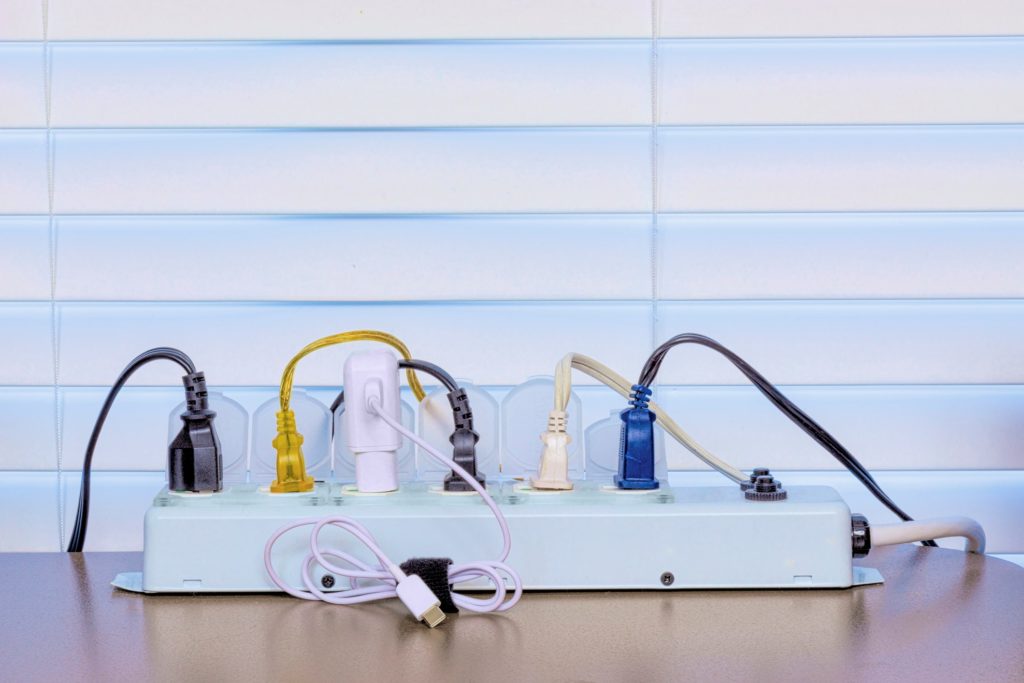
How to Use Power Strips Safely
By: hemant
Once upon a time, being connected with someone meant keeping in touch by writing letters, attending family reunions, saying hello at the supermarket, or joining the same club.
Not that you can’t do any of that today, mind you, but in 2022, the definition of “connectivity” has grown exponentially through such means as PCs, laptops, smart TVs, gaming systems, tablets, ear buds, and more. These are all electrically powered devices that must be plugged in on their own or to a charging cord to remain functional.
And yet the more “stuff” you acquire, the faster you run out of outlet space. So, what’s a connected person like you to do? Sure, start using power strips. In many cases, power strips are the perfect solution to stretching a homes’ electrical capabilities, but they are not without risk.

8 rules to follow when using power strips
- Don’t string multiple power strips together. Doing so can cause one of the power strips to fail and even catch fire.
- Use only outdoor-rated power strips outdoors. Anything else is not made to withstand the elements, especially water.
- If your power strip has 5 receptacles, you can plug in 5 electronics, right? Not so fast. Every power strip has a load capacity, meaning it can only move so much power at a time. Overloading it can melt the plastic and spark a fire. Determine the amperage of the items you want to plug in and make sure it doesn’t exceed the power strip’s capacity.
- Avoid running power strips and extension cords under rugs. These devices can generate heat and spark a fire under a rug. Plus, stepping on the hidden strip or attached cables can damage them, further creating a shock or fire hazard.
- Don’t plug beauty tools such as hair dryers, straighteners, or curling irons into a power strip; they simply aren’t designed to generate the kind of consistent high amperage required. Use only GFCI-protected outlets.
- Dispose of power strips at the first sign of damage. Frayed cords and burned sockets can cause a fire even if they seem to work just fine.
- Teach children to stay away from outlets and, for added safety, insert outlet plugs in all unused wall and power strip outlets. Place power strips as much out of reach of young children as possible.
- As you well know, electricity and water – when combined – are a recipe for disaster. Never plug a sump pump into a power strip; only use a GFCI-protected outlet that is located well above floor level should the sump pump fail. GFCI outlets should also be installed in your bathroom, kitchen, laundry room, and everywhere else electricity and running water are available.
When it comes to implementing added electrical safety measures, Excel Elec provides all the help you need, including adding more outlets, replacing standard outlets with GFCI models where needed, upgrading your breaker or fuse box if your home is under-powered and more. Contact us today to schedule service and, before we start the project, you’ll receive a guaranteed price, which means no unpleasant surprises once the job is completed.





